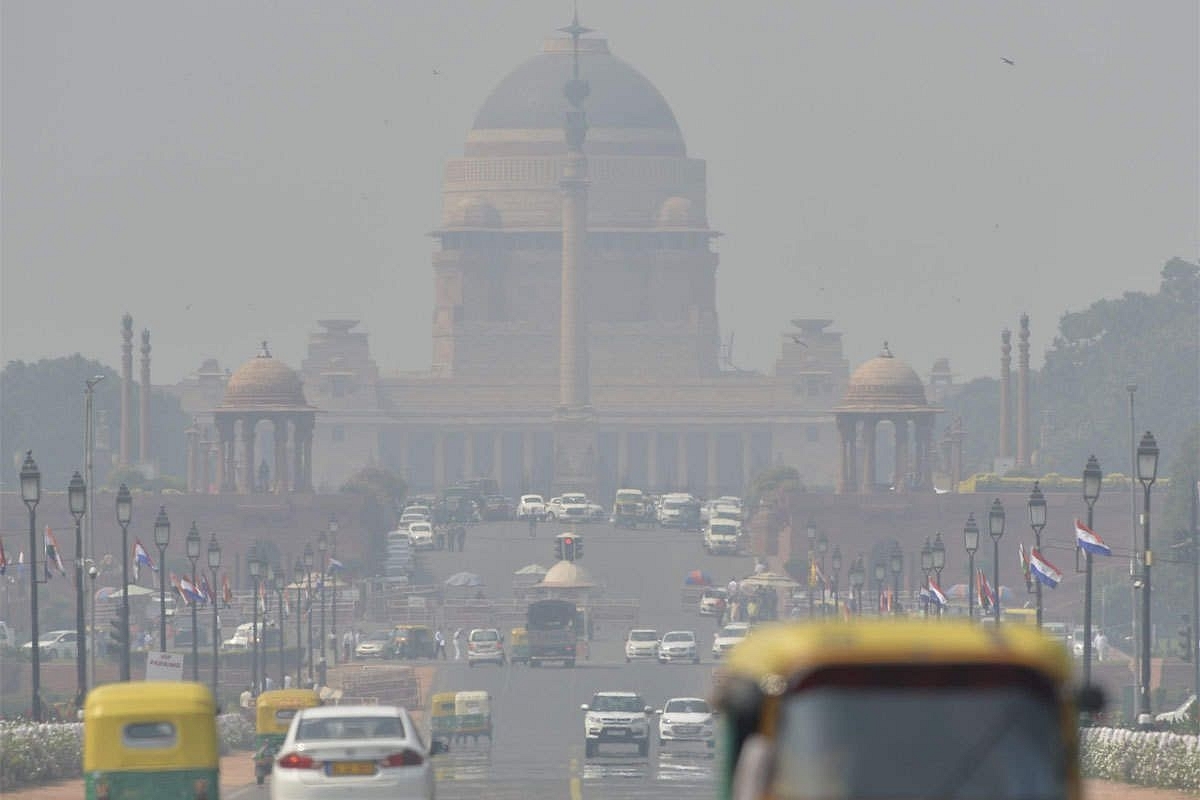News Brief
New Delhi And South Delhi Areas Worst Affected By Ground-Level Ozone: CSE Reports
- Ozone not only builds up in cities but also drifts long distances to form a regional pollutant that makes both local and regional action necessary.

The assessment has traced trends during summer (March-May) between 2019 to 2023 May.
Delhi-NCR is hit by summer ozone once again, but levels lower than previous summers, as the region is in the grip of a multi-pollutant crisis, according to the Centre for Science and Environment (CSE) analysis.
On the eve of the World Environment Day (5 June), CSE has issued an alert on rising ozone pollution and multi-pollutant crisis that Delhi and the National Capital Region (NCR) are facing during summers.
If unchecked, this could become a serious public health crisis in coming years. CSE has continuously warned about the growing problem of ground-level ozone.
“The policy and public attention that is nearly fully drawn towards particulate pollution, has neglected mitigation of toxic gases. Inadequate monitoring, limited data and inappropriate methods of trend analysis have weakened the understanding of this growing public health hazard.
"Learn from the advanced economies that after controlling particulate pollution, they have fallen into the grip of rising NOx and ozone crisis. India should prevent this trap. But the standard practice of the Central Pollution Control Board (CPCB) to average out the data of all stations to determine daily AQI cannot capture the public health risk from this short-lived and hyper-localised pollutant.
This underestimates the severity of the local build up and high toxic exposures in the hotspots,” says Anumita Roychowdhury, executive director, research and advocacy, CSE.
“Due to the very toxic nature of ground-level ozone, the national ambient air quality standard for ozone has been set for only short-term exposures (one-hour and eight-hour averages), and compliance is measured by the number of days that exceed the standards. Compliance requires that the standards are met for 98 per cent of the time of the year," she added.
Avikal Somvanshi, senior programme manager, Urban Lab at CSE said, "It may exceed the limits on two per cent of the days in a year, but not on two consecutive days of monitoring. There should not be more than eight days in a year when the ozone standard is breached, and not on two consecutive days.”
Why Does Ozone Need Special Attention?
Health evidence suggests that ozone is emerging as a serious public health issue in India.
The 2020 State of Global Air report states that age-standardized rates of death attributable to ground-level ozone is among the highest in India and the seasonal 8-hour daily maximum concentrations have recorded one of the highest increases in India between 2010 and 2017 — about 17 per cent.
This requires a deeper understanding of what is going on in different cities and regions to inform mitigation. Complex chemistry of ground-level ozone makes it a difficult pollutant to track and mitigate.
Ground-level ozone is not directly emitted from any source. It is produced from complex interaction between nitrogen oxides (NOx), volatile organic compounds (VOCs), carbon monoxide that are emitted from vehicles, power plants, factories, and other combustion sources and undergo cyclic reactions in the presence of sunlight to generate ground-level ozone.
VOCs can also be emitted from natural sources, such as plants. Ozone not only builds up in cities but also drifts long distances to form a regional pollutant that makes both local and regional action necessary. This not only affects public health but also crop production and food security.
This highly reactive gas has serious health consequences. Those with respiratory conditions, asthma, chronic obstructive pulmonary disease, and particularly children with premature lungs and older adults are at serious risk.
This can inflame and damage airways, make lungs susceptible to infection, aggravate asthma, emphysema, and chronic bronchitis and increase the frequency of asthma attacks leading to increased hospitalisation.
This assessment has traced trends during summer (March-May) between 2019 to 2023 May (up to 30 May).
The analysis is based on publicly available granular real time data (15-minute averages) from the CPCB’s official online portal Central Control Room for Air Quality Management.
The data has been captured from 58 official stations under the Continuous Ambient Air Quality Monitoring System (CAAQMS) spread across Delhi-NCR. Delhi (40), Gurugram (4), Faridabad (4), Noida (4), Ghaziabad (4), and Greater Noida (2).
This analysis tracks exceedances at each station in core NCR. Breach of the standard by even one station is considered exceedance. Days with multiple stations exceeding the standard indicates the severity of the spatial spread and number of people exposed.
Given that the data is capped at 200 µg/m3 by CPCB, it is not possible to determine how high the concentration really goes.
Introducing ElectionsHQ + 50 Ground Reports Project
The 2024 elections might seem easy to guess, but there are some important questions that shouldn't be missed.
Do freebies still sway voters? Do people prioritise infrastructure when voting? How will Punjab vote?
The answers to these questions provide great insights into where we, as a country, are headed in the years to come.
Swarajya is starting a project with an aim to do 50 solid ground stories and a smart commentary service on WhatsApp, a one-of-a-kind. We'd love your support during this election season.
Click below to contribute.
Latest